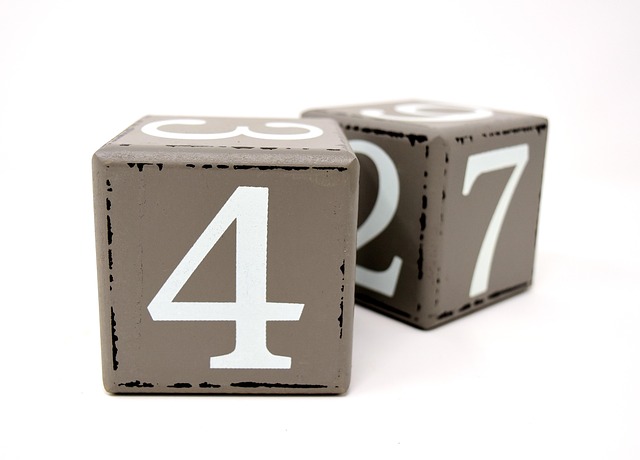Common Hijri Calendar Conversion Mistakes to Avoid
The Hijri Calendar, a lunar-based system used in Islam, differs from solar calendars like Gregorian…….

The Hijri Calendar, a lunar-based system used in Islam, differs from solar calendars like Gregorian due to reliance on moon phases. This variability can cause inconsistencies when comparing historical records with modern dating systems. Converting between calendars requires considering time zones and lunar-solar hybrid factors unique to the Hijri system, making direct conversions challenging without accounting for varying moon phases and solar positions. Accurate conversions demand recognition of these differences and specific tailoring based on location and cultural practices, as highlighted in "Hijri Era: Past and Present".
Converting to Hijri dates can be challenging due to common mistakes stemming from misinterpretations of lunar cycles, inaccurate time zone conversions, cultural variations, and incorrect leap year carry-overs. This article explores these errors in detail, providing insights for accurate Hijri calendar adoption. Learn how to avoid missteps such as assuming a fixed 354-day lunar month or neglecting regional time discrepancies. By understanding these pitfalls, you’ll ensure a more precise and meaningful transition to the Hijri Calendar.
- Misinterpreting Lunar Cycles
- Inaccurate Time Zones Conversions
- Ignoring Cultural Variations
- Carrying Over Leap Years Incorrectly
Misinterpreting Lunar Cycles

Many individuals make the mistake of assuming that the Hijri calendar operates on the same principles as the Gregorian calendar, leading to misinterpretations of lunar cycles. The Hijri Calendar, or Islamic Calendar, is a lunar-based system, meaning it relies on the phases of the moon for its timekeeping. This differs significantly from solar calendars like the Gregorian, which are based on the Earth’s orbit around the sun. A common error is misunderstanding how this lunar cycle impacts date calculations.
For instance, the Islamic month begins with the new moon, and since there isn’t a fixed number of days in a lunar month, dates can vary each year. This is why hijri dating in historical records might appear inconsistent or different from what we’re used to. This unique aspect also plays a significant role in Islamic finance, as it influences date-based transactions and the timing of events like Ramadan and Eid. Even when planning engaging activities for Hijri awareness, such as educational workshops or cultural festivals, understanding these cycles is crucial to ensuring accuracy and respect for the Islamic calendar’s significance in determining Islamic holidays.
Inaccurate Time Zones Conversions

Converting between calendars—especially from the Gregorian system widely used today to the Hijri Calendar—can be tricky, and one of the most common pitfalls is inaccurate time zone conversions. Many people assume that simply converting the date ignores the local time zones, leading to errors. The Hijri Calendar, being a lunar-solar hybrid, relies on both celestial observations and geographic locations, making direct conversions challenging without considering these factors.
In contemporary use of the Hijri Calendar, it’s essential to understand the difference between solar and lunar calendars. While the Gregorian calendar is primarily solar, relying on the Earth’s rotation around the sun, the Hijri follows the moon’s phases and the sun’s position in relation to the earth. This means that months in the Hijri Calendar can vary in length, affecting time zone calculations. For accurate conversions, one must account for these variations and local time differences when transitioning from Gregorian to Hijri dates, ensuring that historical events and personal milestones are accurately reflected in the lunar calendar system. Find us at converting gregorian to hijri date for precise guidance tailored to your location.
Ignoring Cultural Variations

Converting to Hijri dates is often fraught with mistakes due to a lack of awareness about cultural variations. The Hijri Calendar, which is based on lunar cycles, differs significantly from the Gregorian calendar used globally. One common error is assuming that dates remain consistent across cultures; however, Islamic traditions and practices vary worldwide, leading to misinterpretations of Hijri dates. For instance, what constitutes a new year in one country might differ from another, affecting the timing of important Islamic events like Eid al-Fitr or Ramadan.
Understanding the hijri calendar’s impact on architecture, its role in Islamic finance, and islamic architecture and its calendrical basis is crucial for accurate conversions. Ignoring these nuances can result in misunderstandings and misrepresentations of historical and religious events. Visit us at Hijri era: past and present anytime to gain a deeper understanding and avoid such pitfalls when navigating the complex world of Hijri dates.
Carrying Over Leap Years Incorrectly

Converting to Hijri dates can be tricky for many due to some common mistakes, especially when it comes to leap years. The Hijri Calendar, with its lunar basis, incorporates a unique system that differs significantly from the Gregorian calendar used globally. One frequent error is the incorrect carrying over of leap years, which has significant implications in timekeeping traditions in Islam. While the Hijri year is approximately 11 days shorter than the Gregorian one, introducing a leap year mechanism to align with solar years is not as straightforward.
This miscalculation can lead to dates being off by several days or even weeks over time, affecting various aspects of Muslim communities’ lives. In Islamic finance, where financial transactions and investments are often structured based on accurate timekeeping, these errors become particularly relevant. Fortunately, understanding the etymology of Hijri calendar and its role in modern practices can help avoid such mistakes. By being mindful of these nuances, especially when adopting this calendar for personal or communal use, Muslims can ensure that their dates remain aligned with the original intentions of the Islamic faith. Find us at [your brand/source] to learn more about these transformations over time.
Converting to the Hijri calendar, while rich in cultural significance, can be fraught with errors if common pitfalls are not avoided. Misinterpreting lunar cycles, incorrect time zone conversions, neglecting cultural variations, and improper handling of leap years are frequent mistakes that can skew dates. Understanding these nuances is essential for accurately navigating the Hijri calendar. By being mindful of these issues and adopting a nuanced approach, individuals can ensure more precise date conversions, enhancing their appreciation of this ancient timekeeping system.







